Here is a possible approach (the principle behind the function I wrote, available on Matlab Central):
I created this test image and an arbitrary point of view:
testscene=zeros(500);
testscene(80:120,80:120)=1;
testscene(200:250,400:450)=1;
testscene(380:450,200:270)=1;
viewpoint=[250, 300];
imsize=size(testscene); % checks the size of the image
It looks like this (the circle marks the view point I chose):

The next line computes the longest distance to the edge of the image from the viewpoint:
maxdist=max([norm(viewpoint), norm(viewpoint-[1 imsize(2)]), norm(viewpoint-[imsize(1) 1]), norm(viewpoint-imsize)]);
angles=1:360; % use smaller increment to increase resolution
Then generate a set of points uniformly distributed around the viewpoint.:
endpoints=bsxfun(@plus, maxdist*[cosd(angles)' sind(angles)'], viewpoint);
for k=1:numel(angles)
[CX,CY,C] = improfile(testscene,[viewpoint(1), endpoints(k,1)],[viewpoint(2), endpoints(k,2)]);
idx=find(C);
intersec(k,:)=[CX(idx(1)), CY(idx(1))];
end
What this does is drawing lines from the view point to each directions specified in the array angles and look for the position of the intersection with an obstacle or the edge of the image.
This should help visualizing the process:

Finally, let's use the built-in roipoly function to create a binary mask from a set of coordinates:
FieldofView = roipoly(testscene,intersec(:,1),intersec(:,2));
Here is how it looks like (obstacles in white, visible field in gray, viewpoint in red):




